 Corn Cob Pipes have many, many fans, probably way more than anyone knows. Of course, there are also those that treat the lowly corn cob pipe as if they were the Rodney Dangerfield of pipes … they get no respect. However, the history of corn cob pipes dates back to 1869 and over 3,000 are produced on a daily basis. Back in September 2009, we published the story of the Missouri Meerschaum company, the sole producer of the original corn cob pipe [Corn Cob Pipes, The Making Of at Missouri Meerschaum], which included photos showing the step-by-step process of how they are produced. Now, we have been granted the exclusive rights to re-publish a fascinating video originally produced by Aaron Mermelstein and published on HEC TV.
Corn Cob Pipes have many, many fans, probably way more than anyone knows. Of course, there are also those that treat the lowly corn cob pipe as if they were the Rodney Dangerfield of pipes … they get no respect. However, the history of corn cob pipes dates back to 1869 and over 3,000 are produced on a daily basis. Back in September 2009, we published the story of the Missouri Meerschaum company, the sole producer of the original corn cob pipe [Corn Cob Pipes, The Making Of at Missouri Meerschaum], which included photos showing the step-by-step process of how they are produced. Now, we have been granted the exclusive rights to re-publish a fascinating video originally produced by Aaron Mermelstein and published on HEC TV.

What many people do not know is that a special hybrid breed of corn is grown solely for the purpose of making corn cob pipes. This is why the recent cheap Chinese-made knock-offs do not work, and burn through the bottom after the first smoke. Missouri Meerschaum is also a vertically-integrated company. They own the farms and grow all of their own special hybrid corn to make their pipes. Of interesting note, when you watch the video, the narrator speaks of them having a 3-year supply of corn cobs. However, when I spoke to Phil Morgan, the owner of Missouri Meerschaum last week at the “St. Louis Pipe Show” (officially the “Gateway Area Pipe Show and Swap”), he told me that they are just barely able to keep up with their orders.
Thanks to HEC TV for granting permission to re-publish their video. Fill up your Missouri Meerschaum Corn Cob Pipe, light ‘er up, and then press play on the video below.
[HTML1]
This video was originally published on HEC TV on February 18, 2011
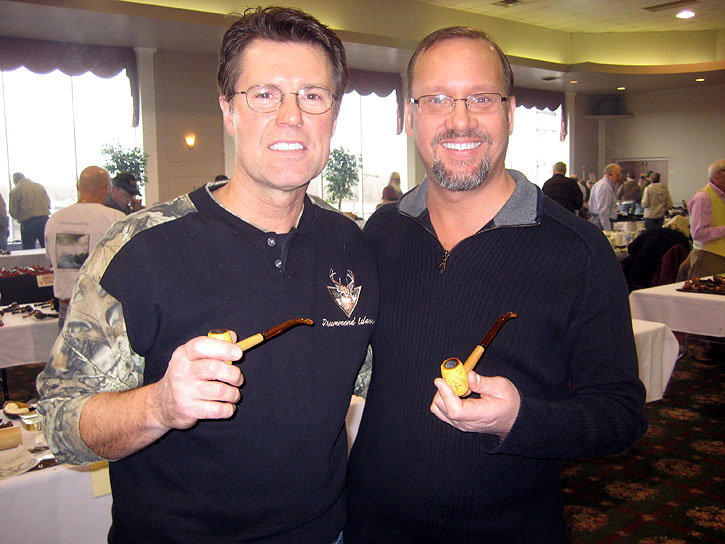
Shop for Corn Cob Pipes Here
Related Article: Corn Cob Pipes, The Making Of at Missouri Meerschaum
Here’s a photo shoot of Chelsea Smoking a Corn Cob Pipe
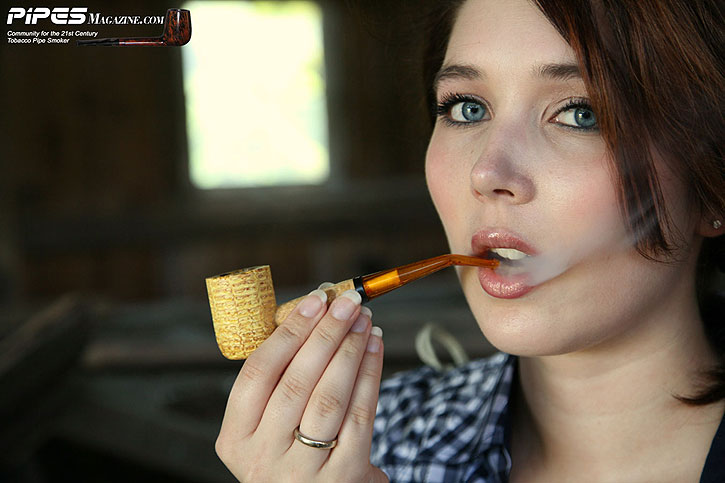



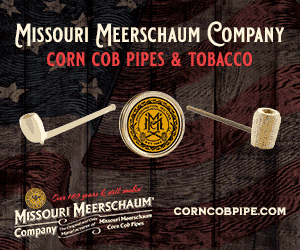




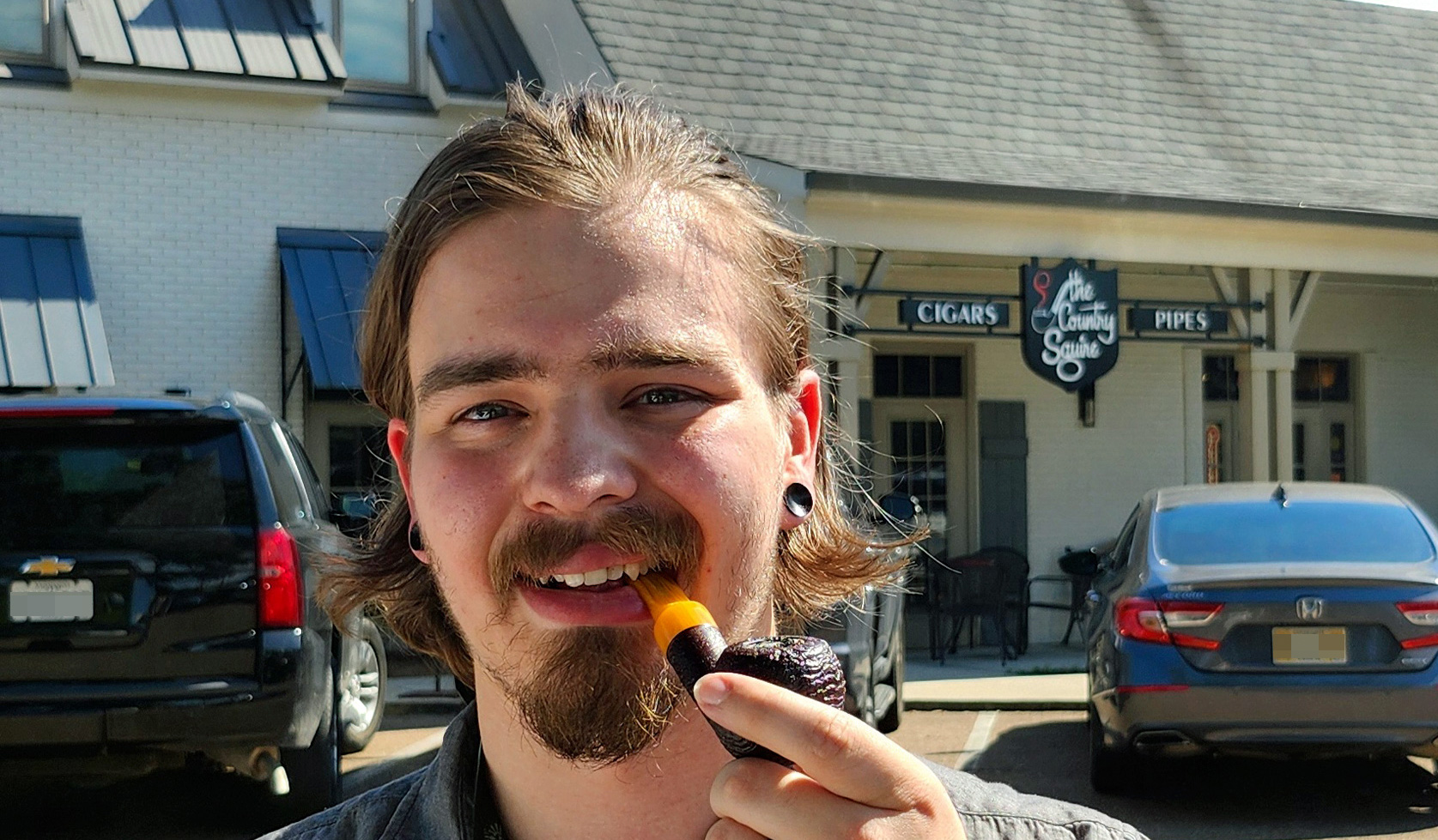

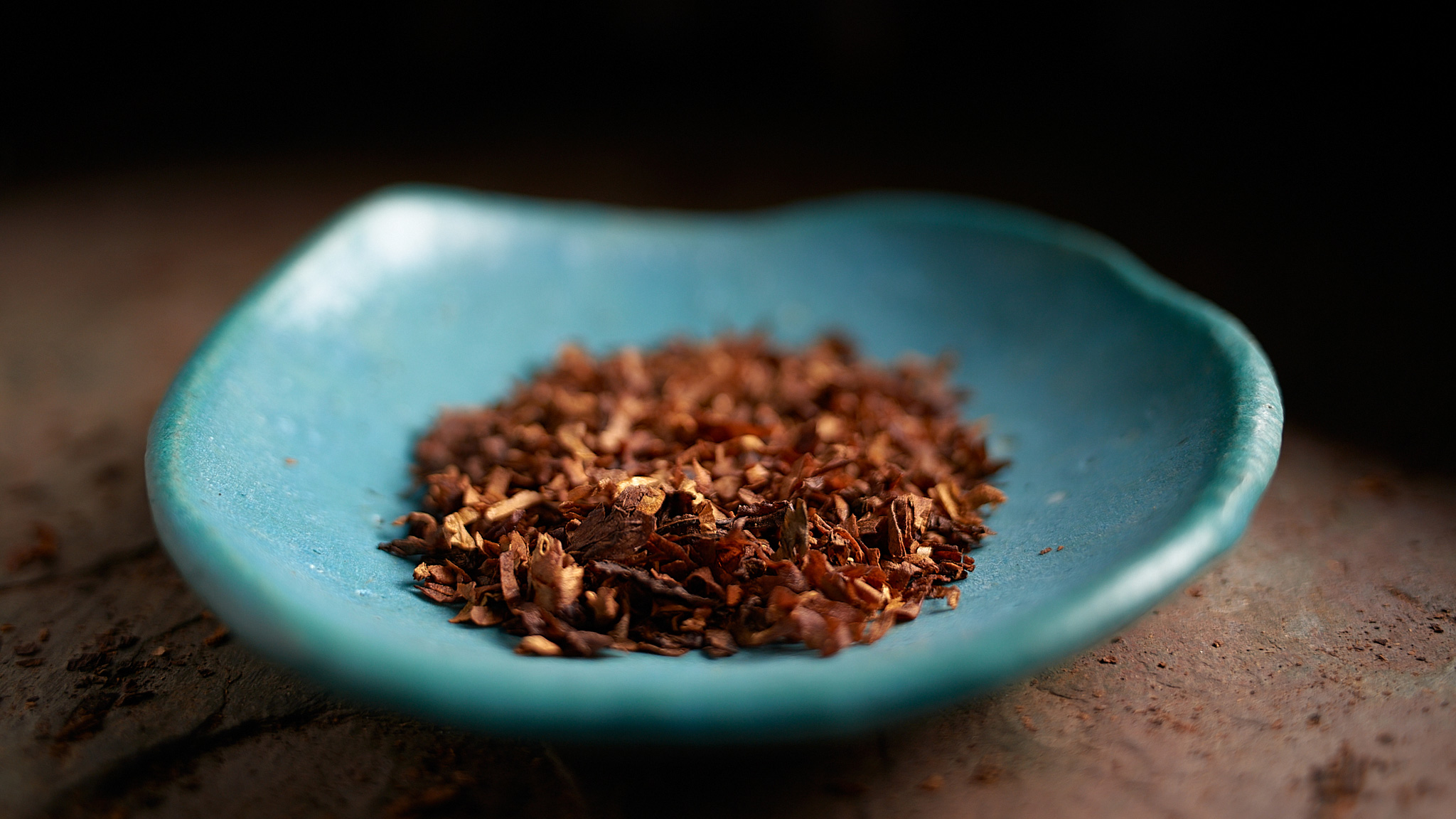
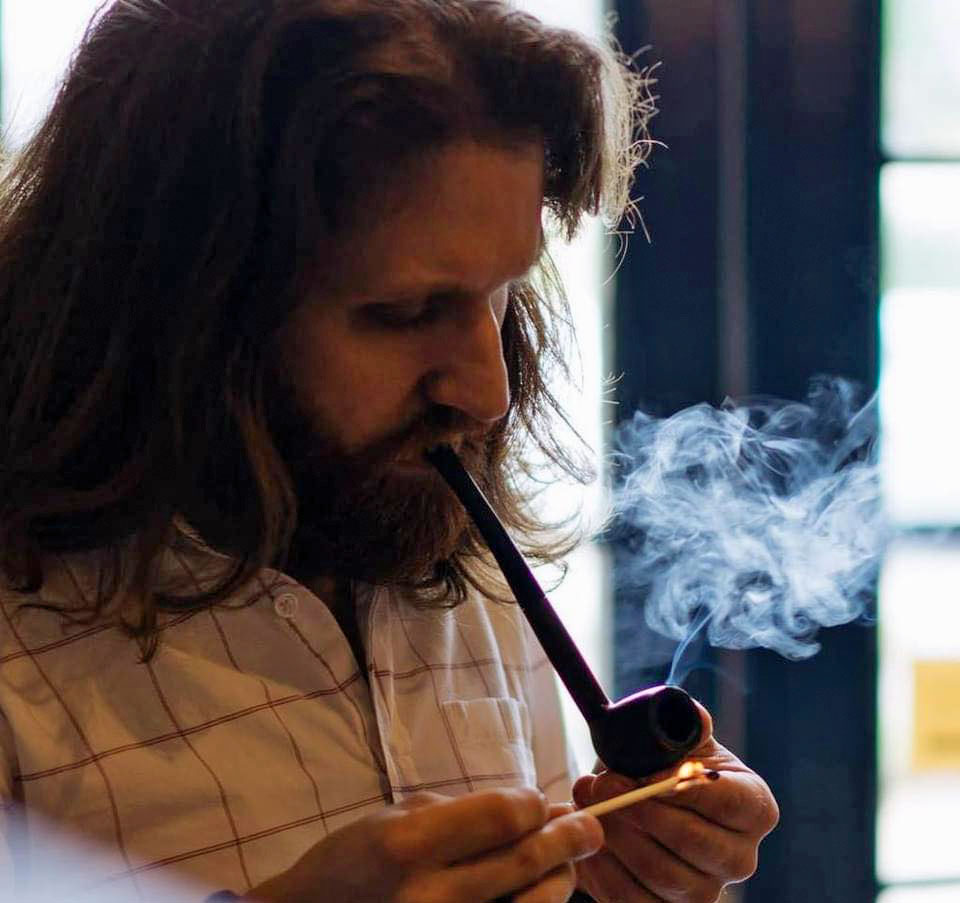






Wonderful pipes I have some cobs that have been around longer than many of my briar.
I’ll be damned if I put my $60/lb. tobacco in cob! That’d be like eating filet mignon with a plastic knife and fork on a paper plate! 🙂
I love MM cobs. I have an entire rack dedicated to them. Heck, check out my screen name.
I’m smoking an MM Country Gentleman as I post this.
Oh, I have a few briars, but I’m basically a cob snob.
Great video, and it’s nice to see Phil and Marilyn in action.
I LOVE my many Missouri Meerschaum pipes, and one day I hope to learn how to pronounce it!
b
And cortezattic, I’m glad you enjoy your non-cob pipes.
I remember seeing a bill board at a junk yard once that said something like “Remember, your car is running on used parts”. In the end, the man who eats filet with a plastic fork is still eating filet.
Love my cobs. Best vehicle in the world for burley tobacco.
Loved that video and I love my MM Cobs.
Nice vid — Gotta say MM is just about the only American made product I am glad to own. Part of me wishes that were otherwise for nationalistic reasons that are perfectly natural the past 100 years or so on the global scale, and let’s face it. . .since the very beginning for the U.S.
I own two cobs myself, one is not MM and I don’t like it (just shoddy quality — made in south america judging by the name) the other is a MM Great Dane (Egg) that I love. Very smooth, very sweet, very nice. I also own a MM Old Hickory that I love as well. They’re a great company that knows what they’re doing and are absolutely fantastig.
Cobs aren’t as pretty as briars and clays when you get down to it in my opinion, but damn they smoke fine and that right there is the thing now isn’t it? Everyone knows there are three factors in the price of a briar — size, grain, and craftsman. With cobs its been pretty standardized on all three marks by MM so we can get a quality pipe for an unbeatable price, every time. Damn fine deal if you ask me.
Love the MM Cob that I’ve got. Was my first pipe and still use it more than the other 3 briars I now have.
Great quality and a fantastic smoke for a really cheap price. Perfect!
Wonderful video, what a great addition to the content here. I love the bit where the woman’s talking about sending pipes off the the boys in Iraq, and says she raided the boss’s desk to get some matches to throw in…that just spoke volumes about the human quotient that we all too often lose sight of in the post-industrial age. I think I’m feeling compelled to go purchase a couple more cobs today, I’ve had my eye on a spool that just whispers to me!
I happen to love my MM cobs,I have one or a few of just about everyone that they make other than the general and freehand. There are just such a great sweet smoke! I think if you haven’t smoked one, you should because you just don’t know what your missing! They’ve got my vote for favorites by far.
When I buy a MM cob, I know several things:
I’ve got more quality than what I spent.
I don’t have to worry if I burn the rim.
I don’t have to wait till they become estate pipes to afford them.
I don’t have to feel like being a PITA because I’m a snob like some others.
I think smoking a cob pipe shows humility and character that you won’t see within our all too few ranks of pipe smokers.
No matter what I put blend of tobacco I put in it, I’m going to enjoy the act of puffin’ regardless.
Just my couple thoughts on it. 🙂
@ cortezattic I hope you’re married. Cause if you’re not, then you should get used to washing fine china and special care to the silverware from eating your filet mignon. IF she knows how to cook it. :))
I ordered 2 cobs through this site- a Country Gentleman and a Great Dane Egg. Incredible smokers. Sorry I took so long to take the plunge; I’m a believer.
I’m an unabashed MM cob lover. (Hence, my screen name.)
Frankly, I could care less what the briar snobs think.
Their closed minds are unlikely to open.
However, I can understand their intolerance. About 30 years ago I had a rack full of briars and cobs weren’t even on my radar screen. I thought what hillbilly would smoke those?
It turns out that I’m THAT hillbilly.
Now, I have a rack full of MM cobs and only a handful of briars. Oh, I enjoy looking at and smoking a fine briar and admire the design and craftsmanship of pipes from around the world.
But at this stage in my life, image is not a concern.
A comfortable pipe at an affordable price is.
But, no matter the price, cobs offer quality, character and a satisfying smoking experience.
To my mind — to my taste — they not at all inferior to briars.
But they are different.
They are uniquely American.
And most importantly, MM cobs are superb smokers.
Yes, I live in Missouri and appreciate this country’s history and literature, and perhaps that carries a certain prejudice, accounting to some degree for my cob preference.
It cannot be denied that the cob boasts a rich heritage.
It’s a source of pride to those who make it, smoke it and admire it from afar.
Genuine Americana.
Uh oh, I fear I’ve actually become a cob snob.
Kevin,
This video and write up makes me want to bust the MM diplomat again. Thanks for reminding us and giving good word to U.S. made products.
My first pipe (back in college days) was a Missouri Meerschaum. I have six now that I enjoy for a quick smoke.
VERY KEWL video! But it still didn’t solve the mystery of the lines with hardwood plug bottoms (and burn-stamp logos vs. the sticker labels)
Mr. Cortezattic, many would be grateful to even have $60lb tobac period. And Ya might even enjoy more of your blessed weed using cobs on occassion due to the fact that one needn’t be fussy about cleaning them as diligently as a $100+ briar which I’m sure you are familiar with.
Myself,I smoke glp Cumberland(for instance), and it’s $35 1/2lb. = $70lb., in cob, clay, and briar, and meer. Each mode of incinerating tobacco brings forth a different pleasant and rewarding experience. And neither mode of incineration devalues the very pricey blends we smoke. But that’s just me talkin’!
I’have been smoking almost only my new “legend” MM pipe during the last three months, so I think that I’m in love with this kind pipe.
Beyond all my expectations as quality of smoke and it is also very light:
ideal when you are out for a walk.
I love MM corncobs, too. I have 5 so far (and about same number of briars). My favorites styles are the Diplomats and Danish Egg — Legends aren’t bad either (I like them for burning flake). None of my cobs are anywhere near burned through, because I install a small heavy aluminum-foil perforated disk in the bottoms (I got the idea from Scott’s [www.aristocob.com] demo of the original Aristocob pipe system with the cob inserts). Also, I switch out the angular amber stems for the danish-style bent stems. I plan to keep on smoking cobs until the come and arrest me for using tobacco.
This video made me finally pull the trigger, and I bought two MM cobs pipes. Wow, is all I can say! They smoke beautifully, are cool, and as so uniquely American, that I just love them. I’ve owned $1000 Danish pipes and $600 Dunhills that don’t smoke as well as these corn cobs. I’m really serious. One day I’ll own a half dozen of these, and it’s just fun!
Tibbe is pronounced as tiebbeh isn’t?
I love corncob pipes :)!
Greetings from The Netherlands!